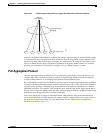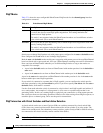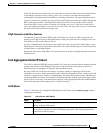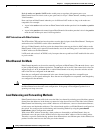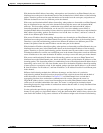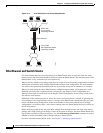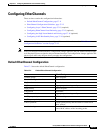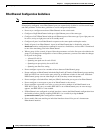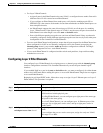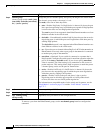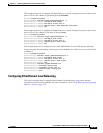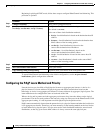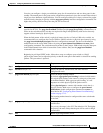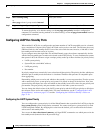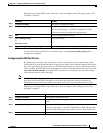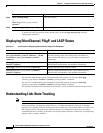
37-13
Catalyst 2960 and 2960-S Switch Software Configuration Guide
OL-8603-09
Chapter 37 Configuring EtherChannels and Link-State Tracking
Configuring EtherChannels
• For Layer 2 EtherChannels:
–
Assign all ports in the EtherChannel to the same VLAN, or configure them as trunks. Ports with
different native VLANs cannot form an EtherChannel.
–
If you configure an EtherChannel from trunk ports, verify that the trunking mode (ISL or
IEEE 802.1Q) is the same on all the trunks. Inconsistent trunk modes on EtherChannel ports can
have unexpected results.
–
An EtherChannel supports the same allowed range of VLANs on all the ports in a trunking
Layer 2 EtherChannel. If the allowed range of VLANs is not the same, the ports do not form an
EtherChannel even when PAgP is set to the auto or desirable mode.
–
Ports with different spanning-tree path costs can form an EtherChannel if they are otherwise
compatibly configured. Setting different spanning-tree path costs does not, by itself, make ports
incompatible for the formation of an EtherChannel.
• For cross-stack EtherChannel configurations, ensure that all ports targeted for the EtherChannel are
either configured for LACP or are manually configured to be in the channel group using the
channel-group channel-group-number mode on interface configuration command. The PAgP
protocol is not supported on cross- stack EtherChannels.
• If cross-stack EtherChannel is configured and the switch stack partitions, loops and forwarding
misbehaviors can occur.
Configuring Layer 2 EtherChannels
You configure Layer 2 EtherChannels by assigning ports to a channel group with the channel-group
interface configuration command. This command automatically creates the port-channel logical
interface.
If you enabled PAgP on a port in the auto or desirable mode, you must reconfigure it for either the on
mode or the LACP mode before adding this port to a cross-stack EtherChannel. PAgP does not support
cross-stack EtherChannels.
Beginning in privileged EXEC mode, follow these steps to assign a Layer 2 Ethernet port to a Layer 2
EtherChannel. This procedure is required.
Command Purpose
Step 1
configure terminal Enter global configuration mode.
Step 2
interface interface-id Specify a physical port, and enter interface configuration mode.
Valid interfaces include physical ports.
For a PAgP EtherChannel, you can configure up to eight ports of the same type
and speed for the same group.
For a LACP EtherChannel, you can configure up to 16 Ethernet ports of the
same type. Up to eight ports can be active, and up to eight ports can be in
standby mode.
Step 3
switchport mode {access | trunk}
switchport access vlan vlan-id
Assign all ports as static-access ports in the same VLAN, or configure them as
trunks.
If you configure the port as a static-access port, assign it to only one VLAN.
The range is 1 to 4094.



